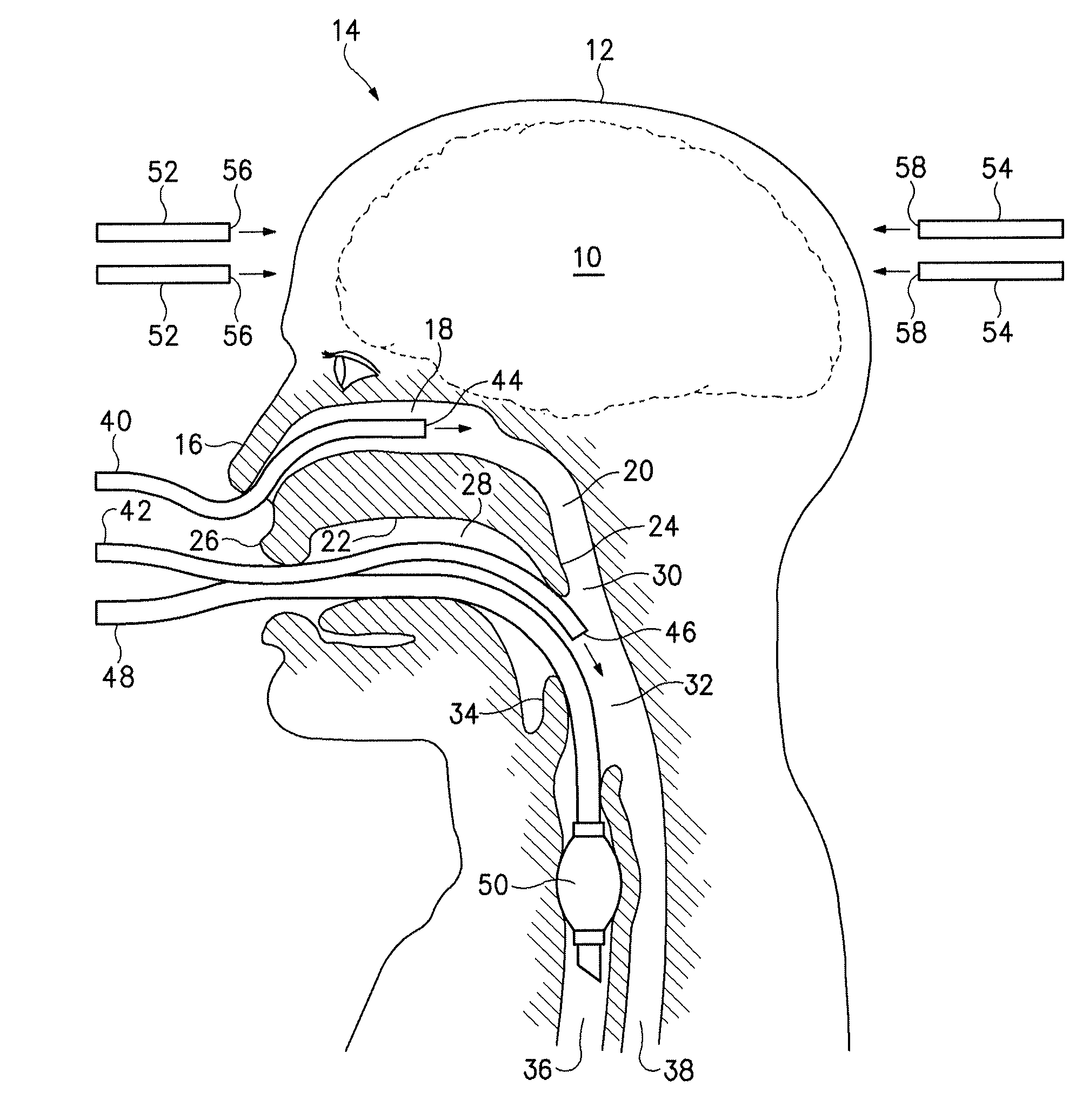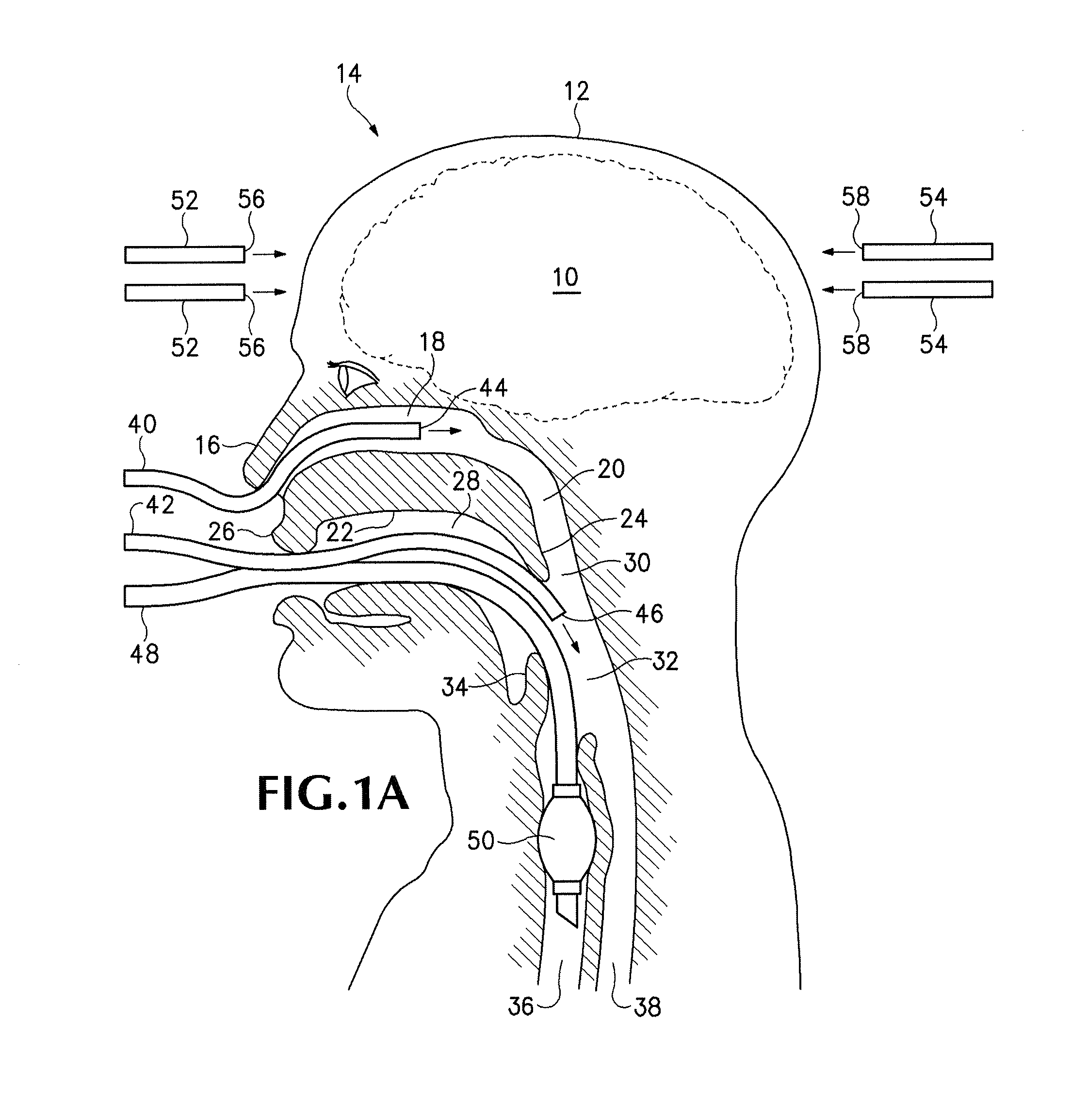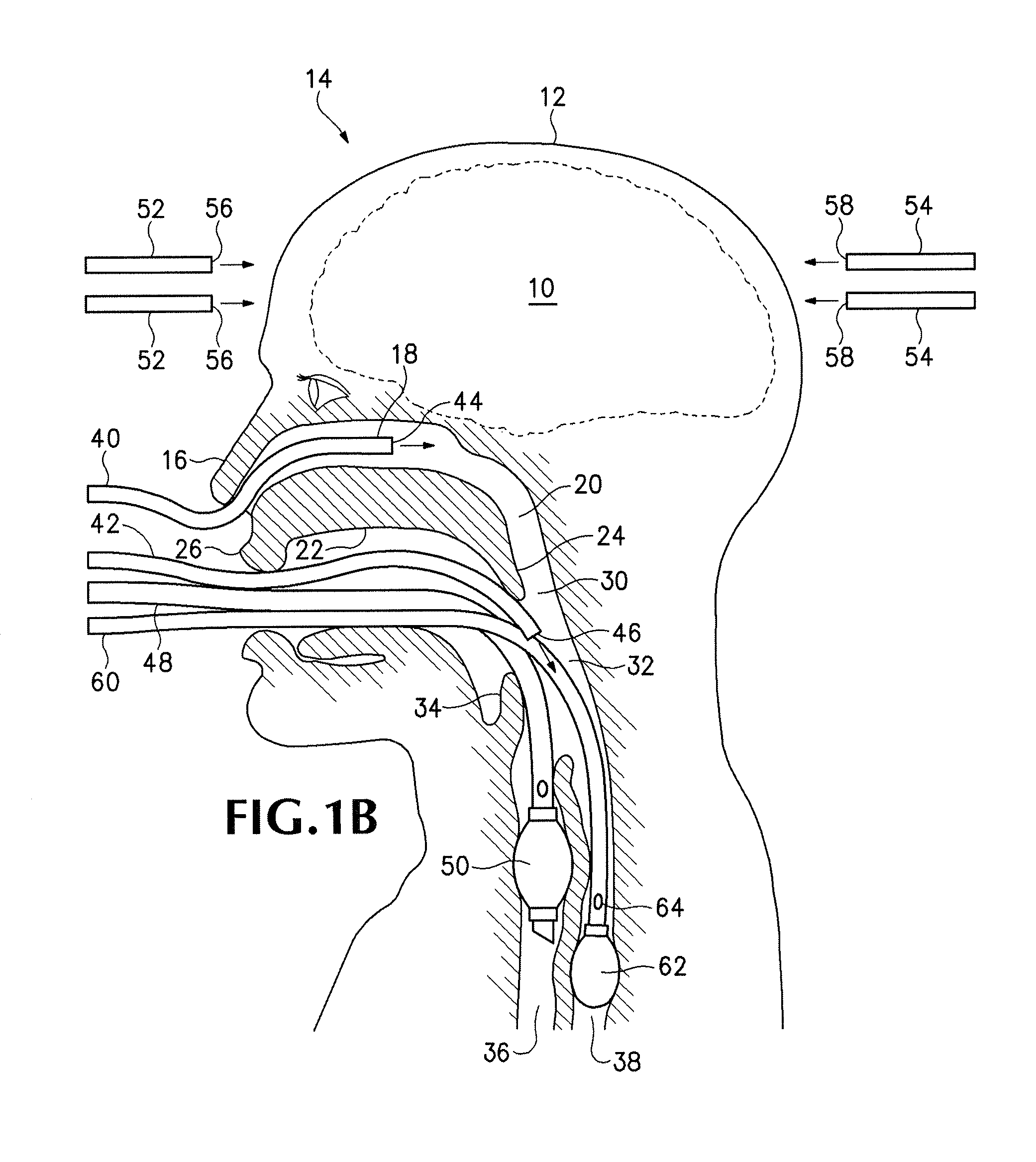Non-invasive systems, devices, and methods for selective brain cooling
- Summary
- Abstract
- Description
- Claims
- Application Information
AI Technical Summary
Benefits of technology
Problems solved by technology
Method used
Image
Examples
example 1
[0524]A 76 kg pig was placed supine and was systemically warmed using a small Gaymar circulating water blanket and forced hot air.
[0525]Four temperature probes were active. A needle probe was inserted into the animal's brain. Two catheter probes were inserted into the aorta and inferior vena cava, respectively. Also, a rectal temperature probe was used to monitor core temperature. Temperature probes were controlled using LabView, and pumps were controlled manually (i.e., the system was run in “open loop” mode). A fluid schematic of the system used is depicted in FIG. 23A, and an electrical schematic is depicted in FIG. 23B. After a series of set-up tests, the pig was rewarmed, and the cooling fluid was refilled. Pumps were set to 300 RPM, and cool fluid was pumped through catheters for approximately 120 minutes. The pig's initial temperatures were: Brain—38.0° C.; Aorta—38.3° C.; Vena Cava—38.4° C.; and Rectal—38.3° C. A graphical representation of results is depicted in FIG. 23C, a...
example 2
[0529]In Example 2, a pig of similar size was used. The cooling apparatus was similar to that used in the previous example; however, flow meters and a vacuum regulator were included. A schematic representation of the fluid system of Example 2 is depicted in FIG. 24A. The electrical system did not change from that in Example 1. A graphical representation of results of Example 2 are depicted in FIG. 24B.
[0530]As depicted at minutes 120 to 180 of FIG. 24B, body core temperature was substantially maintained and / or increased with a counter warming device, while brain temperature decreased (e.g., increasing a brain to body core temperature gradient). A maximum brain to body core temperature gradient of approximately 10.8° C. was achieved. Addition of propofol as an anesthetic assisted in decreasing brain temperature by, for example, decreasing blood flow to the brain and / or allowing deeper equilibration of blood in the large arteries of the neck (e.g., by decreasing flow rate and velocity...
PUM
 Login to View More
Login to View More Abstract
Description
Claims
Application Information
 Login to View More
Login to View More - R&D
- Intellectual Property
- Life Sciences
- Materials
- Tech Scout
- Unparalleled Data Quality
- Higher Quality Content
- 60% Fewer Hallucinations
Browse by: Latest US Patents, China's latest patents, Technical Efficacy Thesaurus, Application Domain, Technology Topic, Popular Technical Reports.
© 2025 PatSnap. All rights reserved.Legal|Privacy policy|Modern Slavery Act Transparency Statement|Sitemap|About US| Contact US: help@patsnap.com



